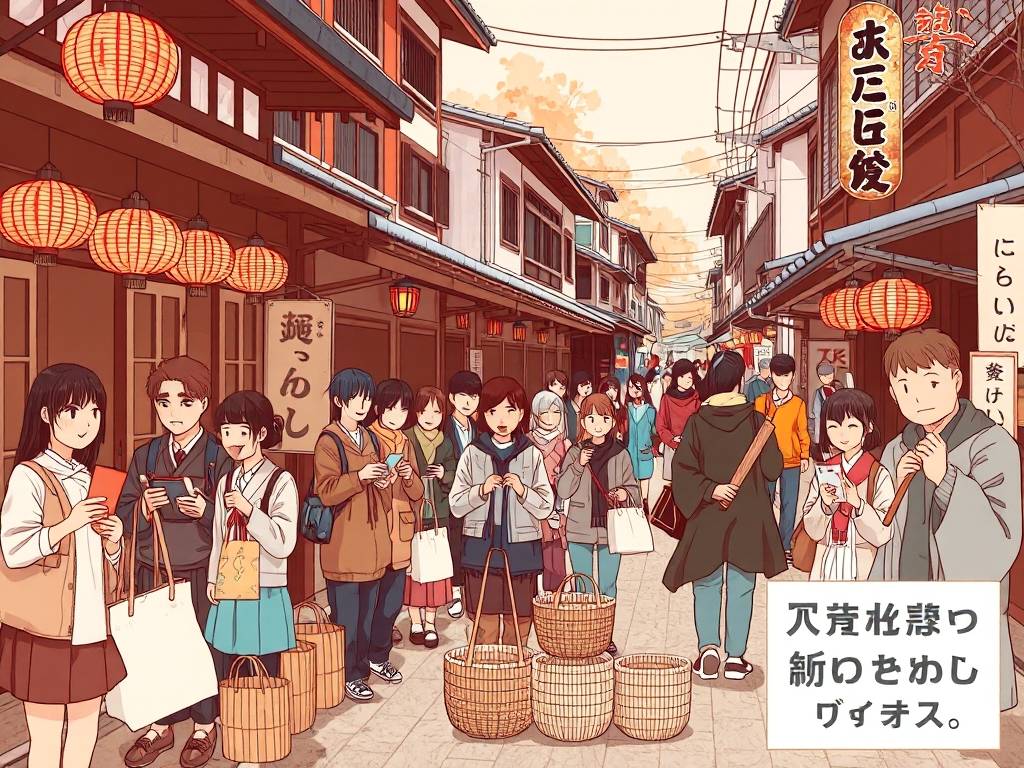Japan Travel
Kyoto’s Traditional Shopping Gear Reviews: Read About Shopper Tools
Kyoto’s Traditional Shopping Gear: Your Essential Guide to Authentic Japanese Souvenirs
Stepping into Kyoto is like walking through a living museum. From the serene temples of Arashiyama to the bustling lanes of Gion, every corner whispers tales of ancient Japan. For the discerning traveler, shopping here isn’t just about acquiring objects; it’s about collecting pieces of a timeless culture. But to truly master the art of shopping in Kyoto’s traditional districts, you need more than just a wallet and a sense of adventure. You need the right gear. This isn't about high-tech gadgets; it's about time-honored tools that enhance your experience, protect your purchases, and connect you more deeply with the city's artisan spirit. Let’s explore the essential Kyoto traditional shopping gear that will transform you from a casual tourist into a savvy cultural shopper.
The Indispensable Furoshiki: Your Eco-Friendly Wrapping Cloth

No discussion of traditional Japanese shopping accessories is complete without the furoshiki. This simple square of fabric is a marvel of Japanese design and practicality. Originally used to carry clothes in public baths (furo), it has evolved into a versatile carrying solution that is both beautiful and sustainable.
When you're navigating the narrow streets of Nishiki Market, hopping from a tea shop to a ceramics store, the furoshiki is your best friend. Its primary use is as a reusable shopping bag for Kyoto markets. Instead of juggling multiple plastic bags, you can neatly wrap a fragile Kiyomizu-yaki pottery piece, bundle several boxes of Kyoto sweets, or create a comfortable shoulder bag for your smaller finds. The techniques are simple to learn—a basic knot can secure almost anything—and using one shows a respect for local customs and the environment.
But the furoshiki is more than a bag; it's a statement. Available in a stunning array of silks, cottons, and synthetics, they feature traditional patterns like cherry blossoms (sakura), cranes (tsuru), or geometric designs. Choosing a furoshiki that speaks to you is part of the authentic Kyoto souvenir shopping experience. It’s a souvenir in itself, one you’ll use long after you return home, carrying with it the memories of your trip. For the ultimate best shopper tools for Kyoto artisan districts, a medium to large-sized furoshiki is non-negotiable.
The Sensible and Stylish Woven Basket: The Kago
For a more structured carry, look no further than the traditional woven basket, or kago. While you might not be carrying one from home, understanding its modern equivalent is key. Many local shops in areas like Pontocho and Gion sell beautifully crafted mini-kago or modern baskets inspired by this classic design. These are perfect for a day of focused shopping.
A sturdy basket is ideal for carrying delicate Japanese ceramics and other fragile items. It keeps your purchases organized and prevents them from knocking against each other. The rigid structure provides protection that a soft bag cannot. When you're considering what to bring for a day of Kyoto shopping, think about bringing a foldable, lightweight tote with a solid base, or even purchasing a small, decorative kago from a local artisan as your shopping companion for the day. It’s a perfect blend of function and style, allowing you to shop hands-free and with confidence, knowing your delicate Kyoto handicrafts are safe.
The Practical Drawstring Bag: Kinchaku
Another cornerstone of traditional Japanese shopping accessories is the kinchaku, a drawstring pouch often made from the same exquisite fabrics as the furoshiki. This is your go-to for securing your most important items: your wallet, phone, passport, and hotel key.
While exploring crowded areas like Fushimi Inari’s base or the Philosopher’s Path shops, having your valuables in a secure, zipper-less bag that you can keep close to your body is a wise move. The drawstring closure is surprisingly secure, and the soft fabric is gentle on your other purchases. It’s the perfect internal organizer within a larger bag or basket. For those looking for essential gear for Kyoto souvenir hunting, a kinchaku is a subtle yet profoundly practical choice that keeps your essentials safe and separate from your new treasures.
Footwear That Can Keep Up: The Tabi and Beyond

Your shopping gear isn't limited to what you carry; it includes what you wear. Kyoto involves a lot of walking, often on stone paths and wooden floors. While modern, comfortable walking shoes are a must, consider the traditional split-toe sock, the tabi.
Tabi are designed to be worn with traditional footwear like geta (wooden clogs) or zori (sandals). While you might not be shopping in geta, wearing tabi with comfortable, slip-on walking shoes can be a game-changer. Why? Because in many traditional shops, tea houses, and even some restaurants, you will be asked to remove your shoes. Slip-on shoes make this process effortless. Furthermore, tabi socks provide a unique comfort and a cultural nod. They are a key part of the best shopper tools for Kyoto artisan districts where etiquette and comfort intersect.
Your Digital Gaijin Helper: The Smartphone (Used Wisely)
In the modern age, your most powerful traditional shopping tool might be your smartphone. But we’re not talking about frantic price comparisons. We’re talking about using it as a bridge to culture.
- Translation Apps: For reading labels on artisanal goods, understanding care instructions for silk kimonos, or communicating with a craftsman, a good translation app is invaluable. It helps you ask, "Is this piece hand-painted?" or "What wood is this made from?"
- Currency Converter: Quickly check the conversion for that beautiful lacquerware box without mental gymnastics.
- Camera (with permission!): Use it to document the beautiful packaging process—a skill in itself in Japan. Always ask politely before taking photos inside a small shop. This respect is part of your shopper etiquette in Kyoto markets.
Putting It All Together: A Day in the Life of a Prepared Shopper
Imagine your day. You start at a quiet temple, then head to the Teramachi Shopping Arcade. You’re wearing comfortable, slip-on shoes and tabi socks. Your kinchaku holds your money and phone securely under your jacket. In your larger tote or newly purchased kago, you have a beautifully patterned furoshiki, neatly folded.
You find a stunning, hand-thrown sake set. The shopkeeper, appreciating your furoshiki, demonstrates a traditional wrapping method, securing the ceramics safely. You pay, placing your wallet back into your kinchaku. Your hands are free, your purchases are secure and beautifully carried, and you have engaged with the culture on its own terms. You are not just a buyer; you are a participant. This is the ultimate goal of having the right Kyoto traditional shopping gear.
In conclusion, equipping yourself with these simple, thoughtful tools will profoundly enrich your shopping journey in Kyoto. They solve the practical problems of carrying and protecting your finds while opening doors to a more authentic and respectful experience. So, before you embark on your next trip to the ancient capital, think beyond the shopping list. Invest in the gear that has served Japanese shoppers for centuries, and discover how the right tools don’t just carry your souvenirs—they become a cherished part of the memory itself.
相关文章
- Tokyo’s Night Market Souvenir Tip Reviews: Read About Gift Hacks
- Japan’s Spring Photography Gear Reviews: Read About Camera Tools
- Japan’s Coastal Bike Gear Reviews: Read About Cyclist Equipment
- Japan’s Budget Accommodation Gear Reviews: Read About Travel Equipment
- Tokyo’s Transportation Gear Reviews: Read About Commuter Tools
- Japan’s Mountain Star Gazing Gear Reviews: Read About Telescope Tools
- Japan’s Traditional Tea Ceremony Gear Reviews: Read About Tea Tools
- Japan’s Summer Surf Gear Reviews: Read About Beach Equipment
- Kyoto’s Fall Foliage Gear Reviews: Read About Hiking Equipment
- Japan’s Budget Dining Gear Reviews: Read About Food Tools
发表评论
评论列表
- 这篇文章还没有收到评论,赶紧来抢沙发吧~


